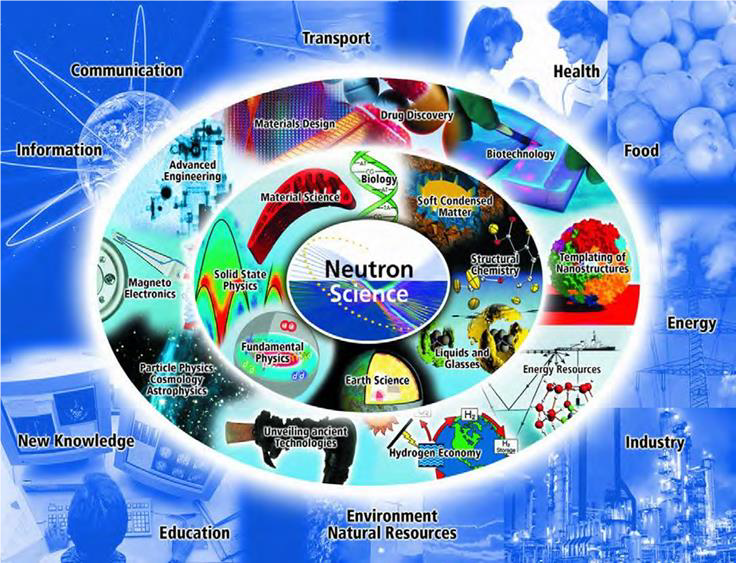Since its emergence, neutron nuclear physics has demonstrated its effectiveness, becoming the basis of nuclear power engineering and a tool for studying the nuclear structure and properties of fundamental interactions. High-precision determination of neutron properties, parameters of its decay and neutron cross sections, studies of neutron-induced fission and nuclear reactions with neutrons are valuable and sometimes unique sources of information for solving cosmology problems, studying the properties of the universe at an early stage of its formation, properties of nuclear matter and fundamental interactions. Nuclear neutron methods (such as activation analysis) have found wide applications as a powerful analytical method in environmental, biological research and archeology.
Fields of application of neutron science
The use of cold neutrons (wavelengths from 4Å to 20Å) in neutron scattering research allows for studies of nanoscale objects and becomes the current trend worldwide, particularly studies of nano-structured objects required by medicine and biology. At the same time, using very cold neutrons (VCN) with wavelengths from 20Å to 100Å one can approach new levels of measurement accuracy in several techniques, e.g. neutron spin-echo and reflectometry. Moreover, VCN are also a very promising tool for research in the field of particle physics and studies of fundamental interactions (e.g. measurements the neutron lifetime, search for neutron-antineutron oscillations, etc.). Ultracold neutrons (UCN) are the well-established experimental tool for research in the field of particle physics and fundamental interactions. Further increase in the intensity of UCN sources will allow both improving the accuracy of such experiments and significantly expanding the scope of the UCN’s usage, for example, for studies of surfaces and thin films.
Thanks to their exceptional features, the neutrons in many ways are an ideal probe for investigating materials because of significant advantages over other forms of radiation used for studies of microscopic structure and dynamics. What mainly underpins our present-day quality of life depends upon our understanding and consequent control of the behavior of materials. Zero electrical charge allows neutrons to penetrate materials deeply, up to few ten cm (cf. with a few micrometers for the synchrotron radiation). The anomalously large inherent magnetic moment allows them to reveal the dynamic and structure of microscopic magnetic structures at the same time. Neutron beams with wavelength around 2Å, that corresponds to typical atomic distances and have energies equivalent to the temperature of the sample, are ideally suited to investigations of atomic structures and observations of atomic movements. Furthermore, neutrons can distinguish between different isotopes of the same chemical element that leads to unique contrast for different materials in complex environments. For example, in contrast to X-rays, hydrogen is visible even on the background of heavy atoms and the exchange of hydrogen by the chemically equivalent deuterium can be used to label different sections in very complex biological macromolecules.
